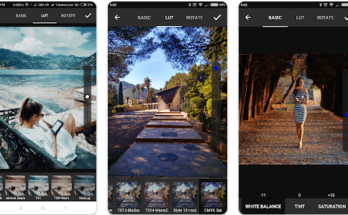What is “Free Internet on Any Android”?
This term generally refers to methods that allow users to access the internet on their Android devices without directly paying for data usage. It’s important to understand that “free” in this context doesn’t necessarily translate to completely unrestricted access. There might be limitations on data speed, bandwidth, or even specific websites/services you can access.
How Does “Free Internet on Any Android” Work?
There are various approaches to consider, each with its own set of pros and cons. We’ll explore the most common methods:
- Public Wi-Fi Hotspots: Many businesses, libraries, airports, and even public parks offer free Wi-Fi access. This is a convenient and often reliable way to access the internet without using your mobile data. However, security is a concern. Unsecured public Wi-Fi networks can be vulnerable to data breaches. We’ll discuss ways to stay safe while using public Wi-Fi later.
- Free Data Plans and Offers: Some mobile carriers provide limited free data plans or data bundles for specific apps and services. These can be a good option if you only need internet access for a particular purpose. Be aware of potential limitations like data caps, throttling (reduced speeds after reaching a certain data usage), and restrictions on which apps you can use the free data with.
- Data Management and Optimization: This involves maximizing your existing data plan by minimizing unnecessary data usage on your Android device. Techniques include disabling background app refresh, enabling data compression features (available on some browsers and built-in data saver options), and adjusting video quality settings when streaming content.
Features of “Free Internet on Any Android”
Since “Free Internet on Any Android” isn’t a single app or service, the features will depend on the method you choose. Here’s a breakdown:
- Public Wi-Fi Hotspots: The “feature” here is the availability of free internet access at specific locations. However, the quality and speed will vary depending on the network provider and user traffic.
- Free Data Plans and Offers: The features depend on the specific plan or offer. You might get a limited amount of data for general browsing, free data for specific apps (like social media or messaging), or data bonuses for completing certain actions.
- Data Management and Optimization: The features in this category are built-in functionalities within the Android operating system or available through data management apps. Tools like background app refresh controls, data compression options, and usage monitoring provide detailed breakdowns of your data consumption.
Pros of How to Use Free Internet on Any Android
| Method | Pros |
|---|---|
| Public Wi-Fi Hotspots | Convenient and readily available in many locations |
| Free Data Plans and Offers | Can be a good option for specific needs or limited browsing |
| Data Management and Optimization | Helps you extend your existing data plan |
Cons of How to Use Free Internet on Any Android
| Method | Cons |
|---|---|
| Public Wi-Fi Hotspots | Security risks on unsecured networks, potential data breaches |
| Free Data Plans and Offers | Limited data caps, throttling after reaching data limit, restrictions on app usage |
| Data Management and Optimization | Doesn’t actually provide “free” internet, just helps you use your existing data more efficiently |
Alternatives to “How to Use Free Internet on Any Android”
| Method | Description |
|---|---|
| Borrowing Data from Another Device (Tethering/Mobile Hotspot) | If a friend or family member has a data plan with hotspot functionality, you can temporarily connect to their internet using your device’s Wi-Fi. |
| Community Internet Programs | Certain regions might offer government or community-backed initiatives providing free or low-cost internet access programs. |
Conclusion and Verdict: How to Use Free Internet on Any Android
The bottom line is that there’s no single magic solution for completely free and unrestricted internet access on Android. However, by understanding the available options and their limitations, you can make informed choices. Here’s a quick recap:
- Prioritize Safety: Public Wi-Fi networks are convenient, but use a VPN and avoid sensitive activities on them.
- Explore Free Data Plans: These can be helpful for specific needs, but be aware of data caps and restrictions.
- Optimize Your Data Usage: Data management techniques can significantly extend your existing data plan.
- Consider Alternatives: Borrowing data from another device or checking for community internet programs might be viable options in certain situations.
Remember: There are also unethical and illegal methods for accessing free internet, such as hacking or using unauthorized network access points. These methods can have serious consequences, so we strongly advise against them.
FAQs: How to Use Free Internet on Any Android
Q: Is it safe to use public Wi-Fi?
A: Public Wi-Fi can be convenient, but it’s not always secure. Unsecured networks are vulnerable to data breaches. To mitigate risks, consider using a Virtual Private Network (VPN) that encrypts your internet traffic. Additionally, avoid sensitive activities like online banking or entering passwords on public Wi-Fi.
Q: How can I find free Wi-Fi hotspots?
A: Many apps can help you locate free Wi-Fi hotspots nearby. Popular options include WiFi Finder and Instabridge. These apps typically use crowdsourced data to compile lists of free Wi-Fi locations.
Q: Are free VPNs safe?
A: Free VPNs can be a double-edged sword. While they might encrypt your traffic, some might have limitations on bandwidth or data usage. Additionally, certain free VPNs have been known to inject intrusive advertisements or even log user data. If you choose to use a free VPN, be sure to research its reputation and understand its limitations.
Q: Is it legal to use a VPN?
A: The legality of using a VPN depends on your local regulations and the VPN’s usage policies. In most cases, using a VPN for personal internet access is legal. However, it’s always best to check your local laws and the VPN provider’s terms of service for any restrictions.
Q: Are there any other ways to save data on my Android?
A: Yes! Several techniques can help you conserve data on your Android device. Here are a few tips:
- Disable background app refresh: This prevents apps from constantly refreshing data in the background, consuming your data plan.
- Enable data compression: Some browsers and built-in data saver options compress webpages, reducing the amount of data downloaded.
- Adjust video quality: Streaming videos is a major data hog. Consider lowering video quality settings when watching online content.
- Utilize data-saving apps: There are apps available that help you monitor your data usage and identify data-consuming apps.
By following these tips and exploring the safe and legal methods outlined in this guide, you can make the most of your internet access on your Android device. Remember, there’s no such thing as a completely free lunch, but with a little planning and awareness, you can navigate the world of free internet on Android effectively.



